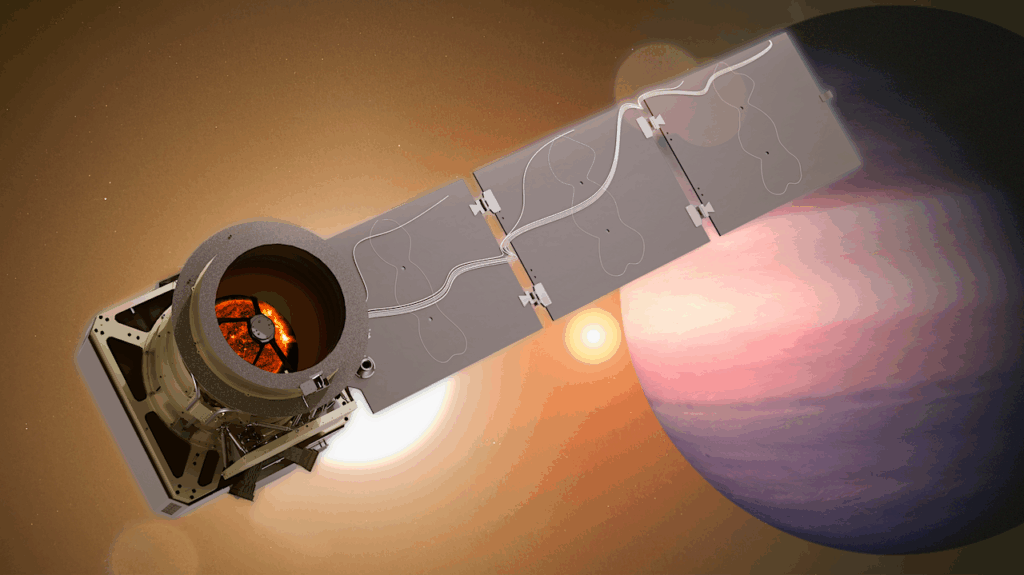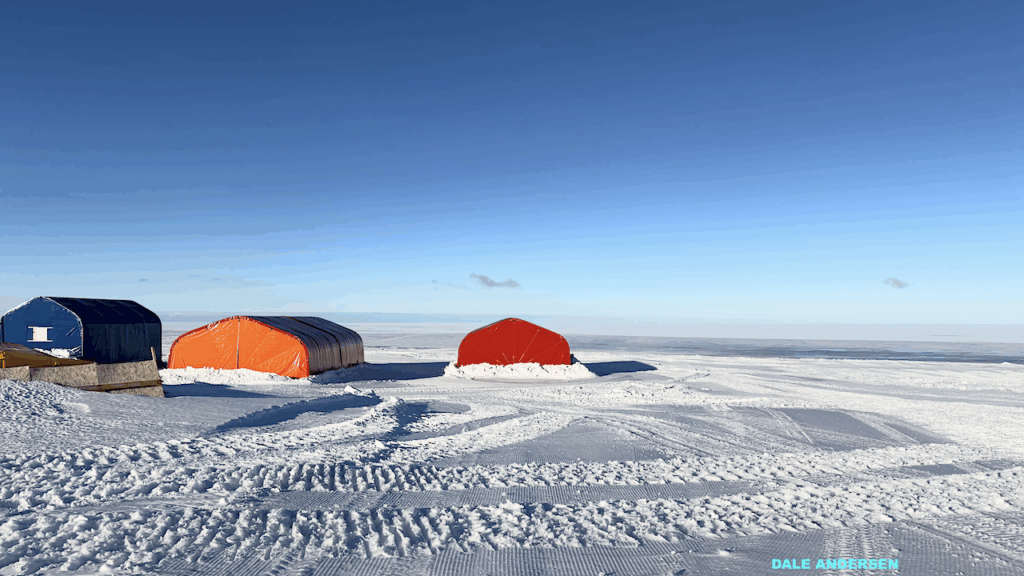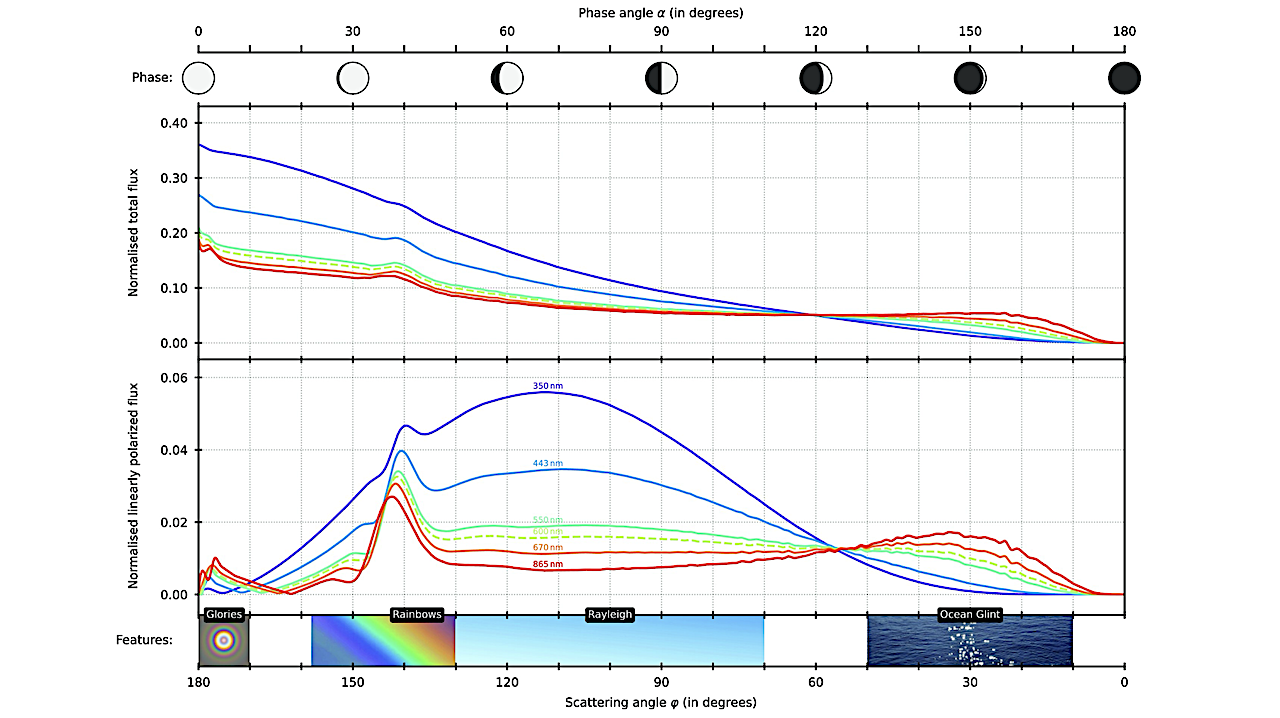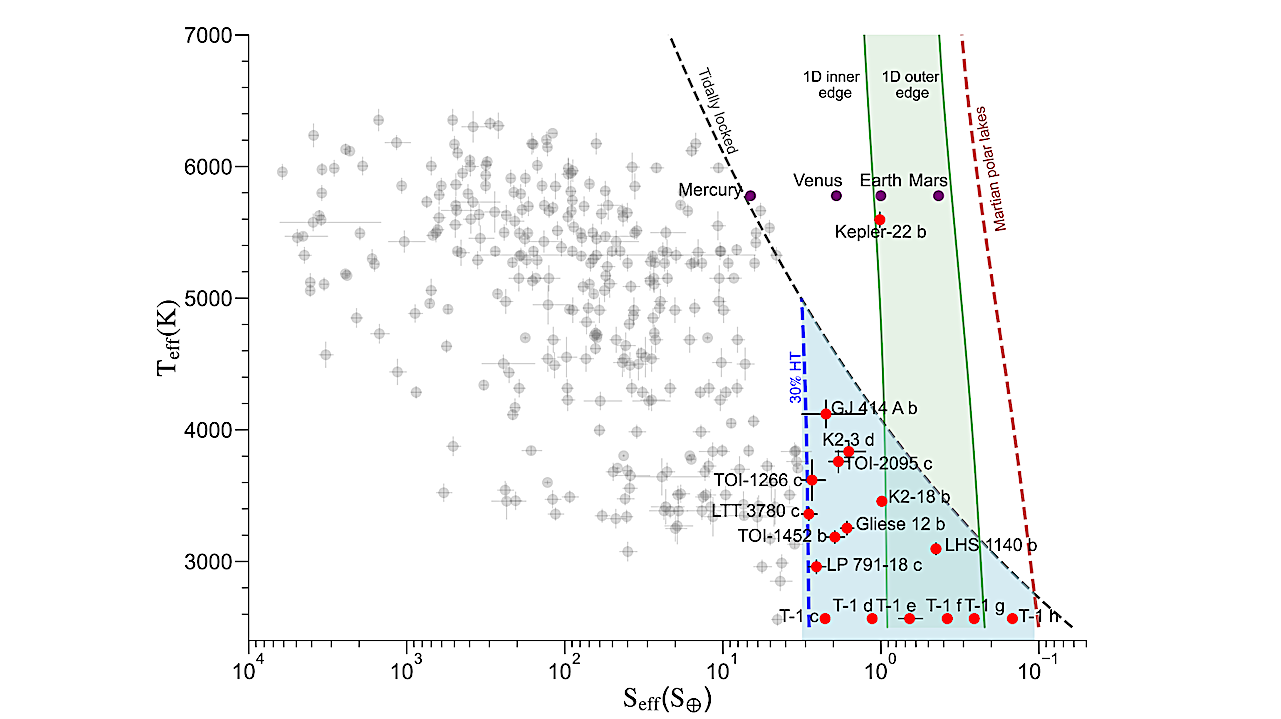Now Reading: Was Earth’s Water Acquired Locally During The Earliest Phases Of The Solar System Formation?
-
01
Was Earth’s Water Acquired Locally During The Earliest Phases Of The Solar System Formation?
Was Earth’s Water Acquired Locally During The Earliest Phases Of The Solar System Formation?
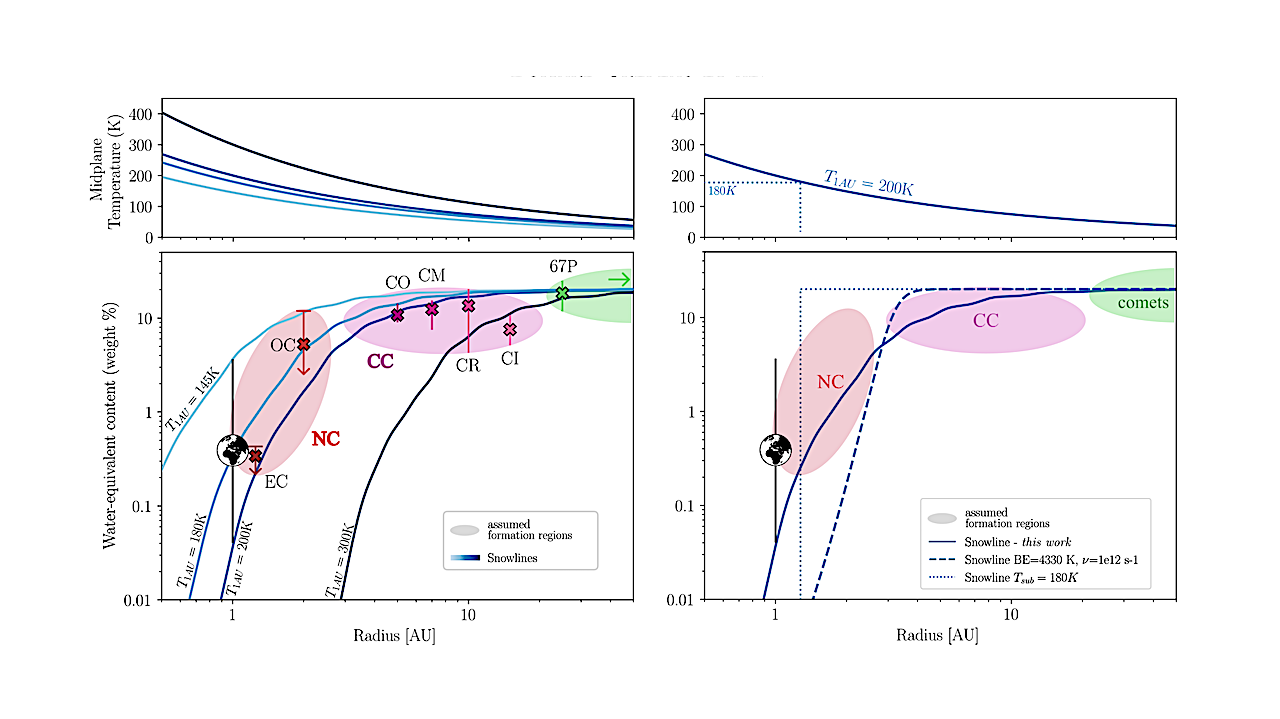
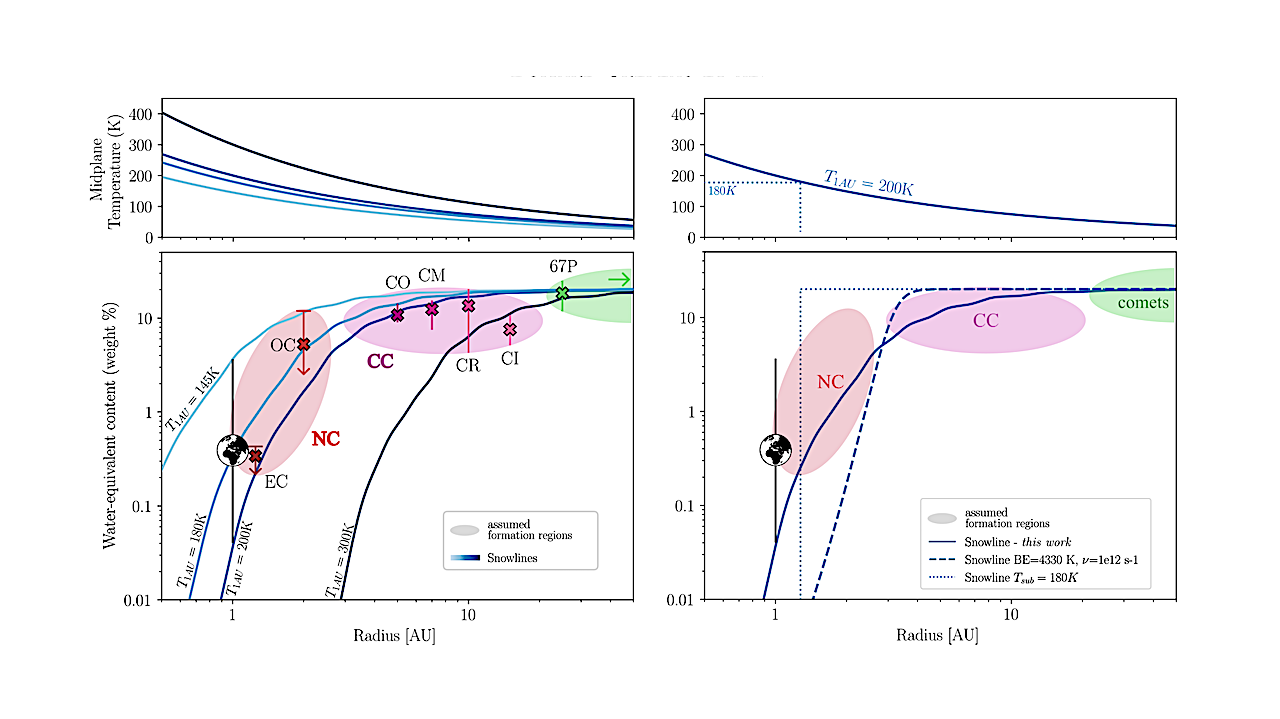
Water-equivalent content by weight in the Solar System and model predictions. Left upper panel: Midplane temperature of the disk using T1au = 145, 180, 200 and 300 K (from light blue to dark blue respectively) in Eq. 2. Left lower panel: The solid curves show the snowlines calculated using the Tinacci et al. (2023) BE distribution for the different temperature profiles (colours code as above). The data points show the median values of the water-equivalent content by weight for different objects of the Solar System (Sec. 3), where vertical bars represent the minimum and maximum range. Please note that the values reported in Tab. 1 are considered upper limits (see text). The uncertainty of the formation region of the various objects are shown as ellipses, distinguishing NC, CC, and comet populations. Right: Computed snowlines using T1au = 200 K in Eq. 2 and different models (see text): BE distribution (solid line), single BE (dashed) and condensation at 180 K (dotted). The right and left panels share the same vertical axis. — astro-ph.EP
The origin of the terrestrial water remains debated, as standard Solar System formation models suggest that Earth formed from dry grains, inside the snowline of the Proto-Solar Nebula (PSN).
Here, we revisit this issue through the lens of computational chemistry. While the classically used snowline relies on a single condensation temperature, recent work in quantum chemistry shows that the binding energy of water on icy grains has a gaussian distribution, which implies a gradual sublimation of water rather than a sharp transition. We use the computed distribution of binding energies to estimate the radial distribution of adsorbed ice on the dust grains across the PSN protoplanetary disk.
Our model reproduces the full range of estimated water abundances on Earth and matches the hydration trends observed in chondrite groups at their predicted formation distances. Thus, we suggest that a significant fraction of Earth’s water may have been acquired locally at early stages of the Solar System formation, without requiring delivery from beyond the classical snowline.
Lise Boitard-Crépeau, Cecilia Ceccarelli, Pierre Beck, Lionel Vacher, Piero Ugliengo
Comments: 7 pages, 2 figures, published in ApJL
Subjects: Earth and Planetary Astrophysics (astro-ph.EP)
Cite as: arXiv:2507.03968 [astro-ph.EP] (or arXiv:2507.03968v1 [astro-ph.EP] for this version)
https://doi.org/10.48550/arXiv.2507.03968
Focus to learn more
Journal reference: ApJL 987 (2025) L25
Related DOI:
https://doi.org/10.3847/2041-8213/ade5aa
Focus to learn more
Submission history
From: Lise Boitard-Crépeau
[v1] Sat, 5 Jul 2025 09:17:34 UTC (740 KB)
https://arxiv.org/abs/2507.03968
Astrobiology,
Stay Informed With the Latest & Most Important News
Previous Post
Next Post
-
 01From Polymerization-Enabled Folding and Assembly to Chemical Evolution: Key Processes for Emergence of Functional Polymers in the Origin of Life
01From Polymerization-Enabled Folding and Assembly to Chemical Evolution: Key Processes for Emergence of Functional Polymers in the Origin of Life -
 02Two Black Holes Observed Circling Each Other for the First Time
02Two Black Holes Observed Circling Each Other for the First Time -
 03How New NASA, India Earth Satellite NISAR Will See Earth
03How New NASA, India Earth Satellite NISAR Will See Earth -
 04Thermodynamic Constraints On The Citric Acid Cycle And Related Reactions In Ocean World Interiors
04Thermodynamic Constraints On The Citric Acid Cycle And Related Reactions In Ocean World Interiors -
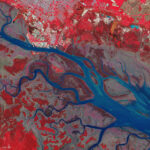 05Φsat-2 begins science phase for AI Earth images
05Φsat-2 begins science phase for AI Earth images -
 06Hurricane forecasters are losing 3 key satellites ahead of peak storm season − a meteorologist explains why it matters
06Hurricane forecasters are losing 3 key satellites ahead of peak storm season − a meteorologist explains why it matters -
 07Binary star systems are complex astronomical objects − a new AI approach could pin down their properties quickly
07Binary star systems are complex astronomical objects − a new AI approach could pin down their properties quickly













